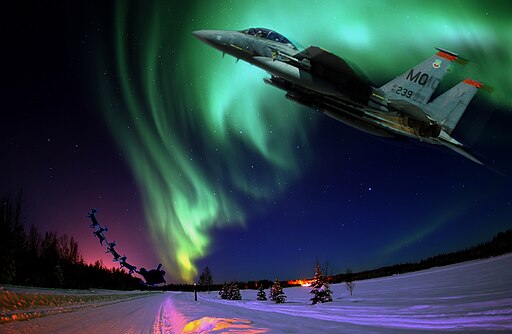Northern Lights, also known as the aurora borealis.
They are a natural light display in the sky, predominantly seen in high-latitude regions (around the Arctic and Antarctic).
Auroras display dynamic patterns of brilliant lights that appear as curtains, rays, spirals, or dynamic flickers covering the entire sky.
Auroras are the result of disturbances in the magnetosphere caused by the solar wind. Major disturbances result from enhancements in the speed of the solar wind from coronal holes and coronal mass ejections. These disturbances alter the trajectories of charged particles in the magnetospheric plasma.
These particles, mainly electrons and protons, precipitate into the upper atmosphere (thermosphere/exosphere).
The resulting ionization and excitation of atmospheric constituents emit light of varying color and complexity.
The Northern-Lights can be seen in many different parts of the world, including Alaska, Canada, Iceland, Norway, Sweden, Finland, and Russia.
The best time to see the Northern Lights is during the winter months when the nights are long and dark.
Tips for seeing the Northern Lights:
Find a dark location away from city lights. Check the aurora forecast before you go. Be patient.
The Northern-Lights can be unpredictable, so it may take some time for them to appear.
Bring a camera! The Northern-Lights are a beautiful sight that you’ll want to capture.
If you’re lucky enough to see the Northern Lights, be sure to take some time to appreciate their beauty. They are a truly unique and awe-inspiring natural phenomenon.


